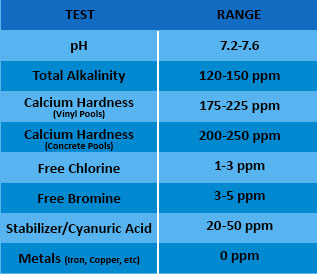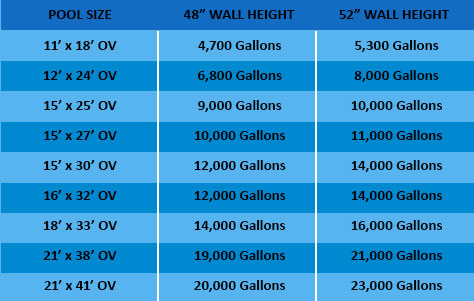
Proper pool chemistry and well-balanced water are necessities to pool maintenance. If your water is out of balance, we have the supplies to help you adjust the problem. Whether it’s pH, alkalinity, calcium hardness or stabilizer, we have the chemicals to put your water chemistry back on track.
If you would like more information on balancing your pool or about proper pool chemistry, visit our Balancers Buyer’s Guide and FAQ.
An unbalanced pool can lead to a lot of headaches and wasted money. The effects can vary from a slight inconvenience to creating serious damage to your equipment or plumbing. Having the wrong balance of chemicals can be unsafe for any swimmers that enter the water since it can irritate eyes and skin while creating stains or bleaching your swimsuits. A sign that your pool is unbalanced can be seen just by taking a look into your pool; if your pool’s water is cloudy or if you have seen any green algae growing then your chemicals are not in a good range. To avoid these issues, keep your pool balanced, and monitor the chemical levels regularly.
You want most readings to fit within a range. To make it easy, we’ve included a chart for you to use:

Always follow the dosing instructions of whatever chemical balancer you have. It will tell you how much to add based on your pool’s size. To find how many gallons are in your pool, you’ll need to find the volume of your pool. Here’s a quick formula you can use:
Length x Width x Average Depth x Multiplier = Volume in Gallons


Maintaining a pool involves experimenting with chemicals to achieve cleanliness and balance, making you feel like a scientist. Despite occasional frustration, it's a rewarding aspect of pool care. Balancers are added to regulate pH, alkalinity, and hardness levels, while other chemicals minimize bacteria. Regular testing ensures pool longevity and safe, healthy swimming. Read the full article here!
Chemicals keep pool water clean and clear by preventing bacteria, mold, and algae. They must be balanced to work effectively, as imbalances can lead to unclean water. Testing chemical levels in parts per million (ppm) helps maintain this balance. 1 ppm is like 1 pound of chemical per 1 million pounds of water. Read the article here!